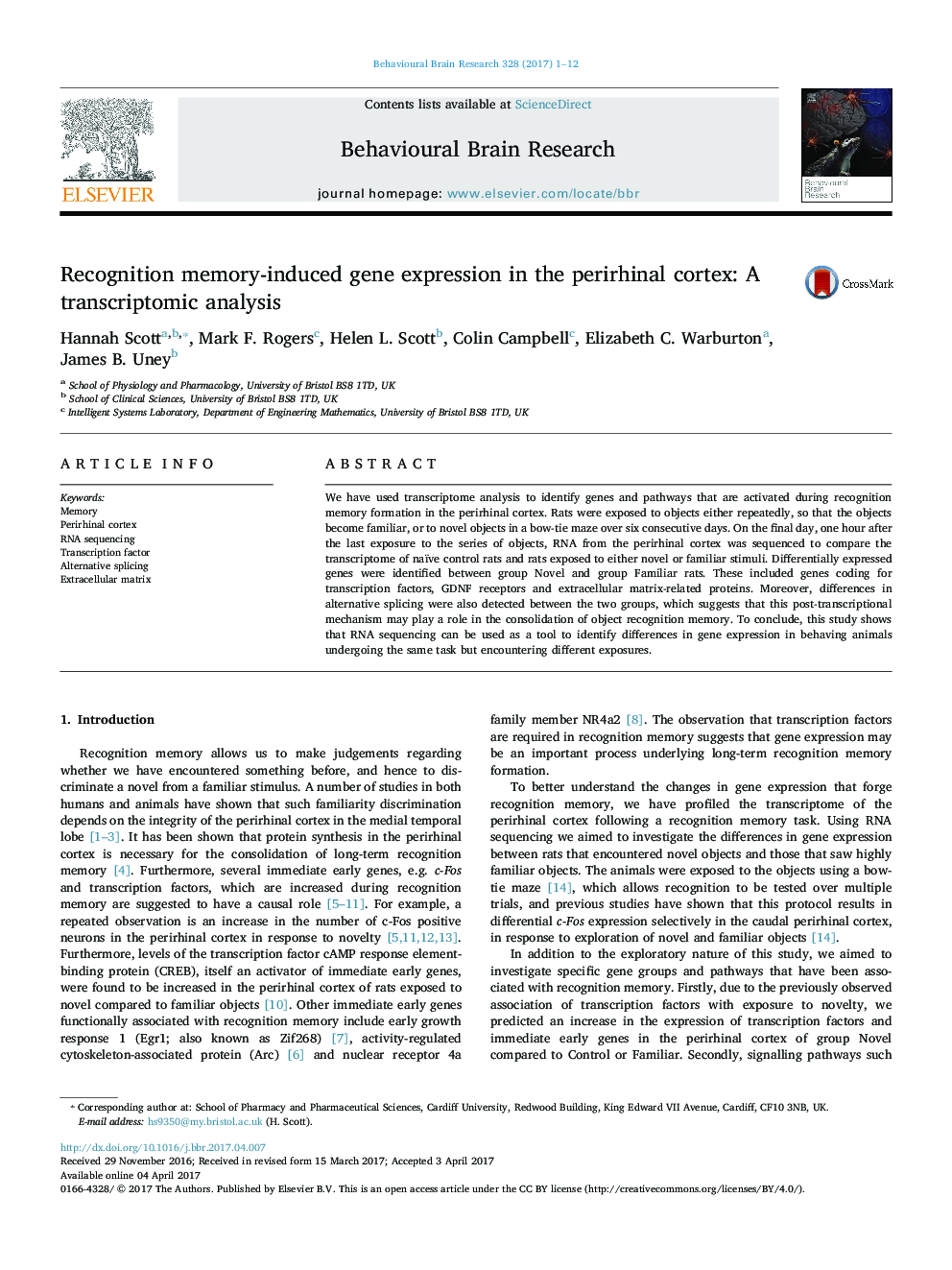| Article ID | Journal | Published Year | Pages | File Type |
|---|---|---|---|---|
| 5735145 | Behavioural Brain Research | 2017 | 12 Pages |
Abstract
We have used transcriptome analysis to identify genes and pathways that are activated during recognition memory formation in the perirhinal cortex. Rats were exposed to objects either repeatedly, so that the objects become familiar, or to novel objects in a bow-tie maze over six consecutive days. On the final day, one hour after the last exposure to the series of objects, RNA from the perirhinal cortex was sequenced to compare the transcriptome of naïve control rats and rats exposed to either novel or familiar stimuli. Differentially expressed genes were identified between group Novel and group Familiar rats. These included genes coding for transcription factors, GDNF receptors and extracellular matrix-related proteins. Moreover, differences in alternative splicing were also detected between the two groups, which suggests that this post-transcriptional mechanism may play a role in the consolidation of object recognition memory. To conclude, this study shows that RNA sequencing can be used as a tool to identify differences in gene expression in behaving animals undergoing the same task but encountering different exposures.
Keywords
Related Topics
Life Sciences
Neuroscience
Behavioral Neuroscience
Authors
Hannah Scott, Mark F. Rogers, Helen L. Scott, Colin Campbell, Elizabeth C. Warburton, James B. Uney,
